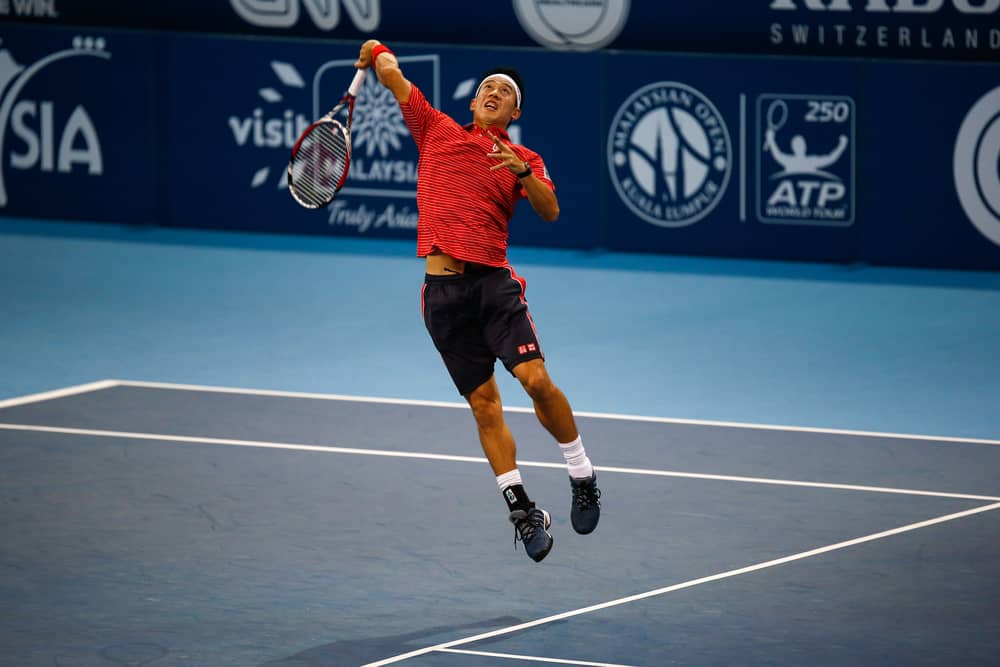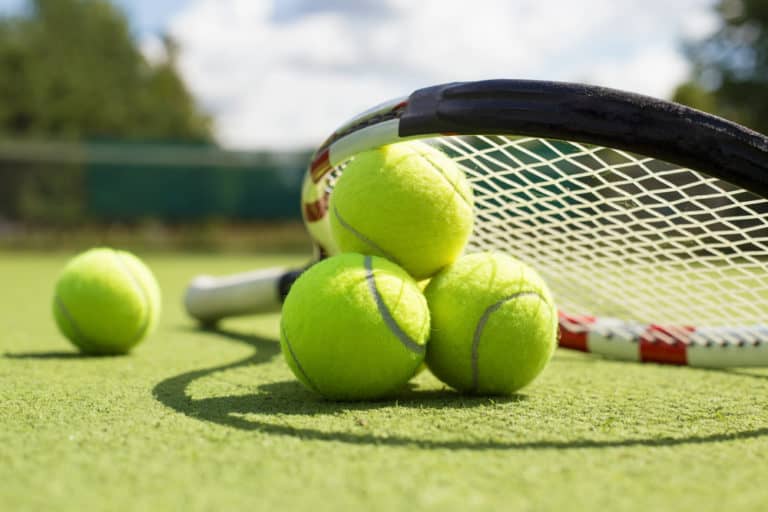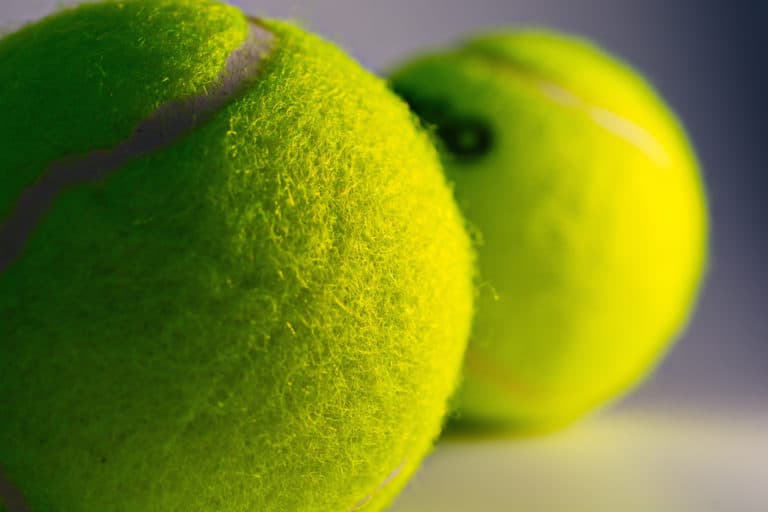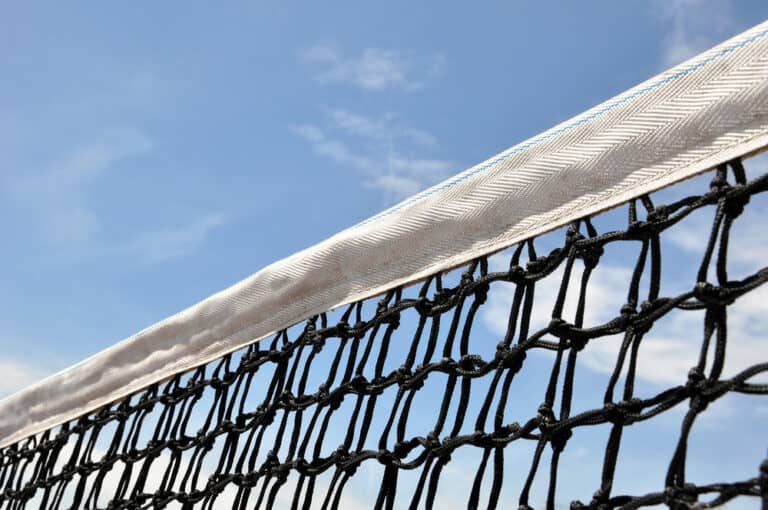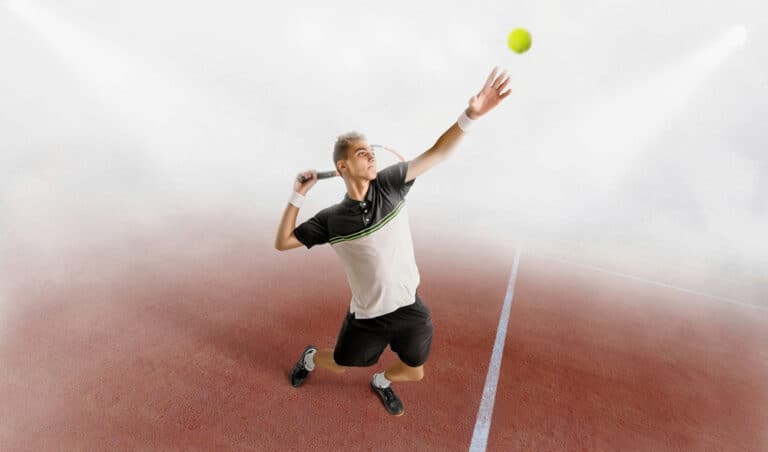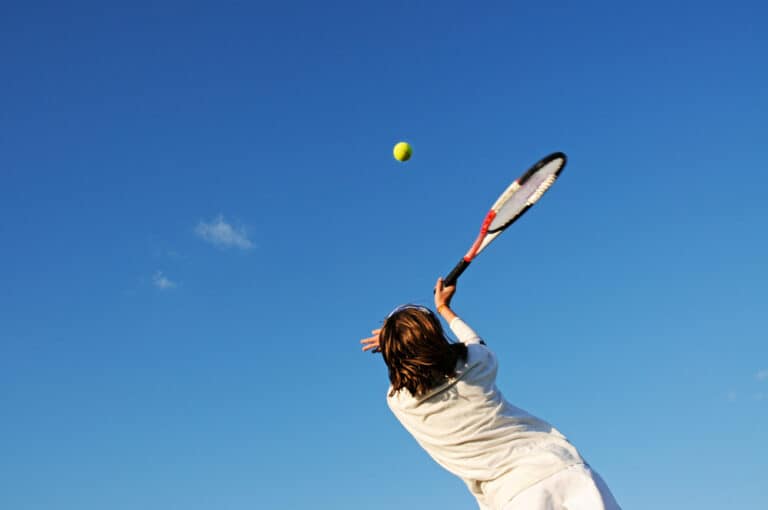How Do You Do A Forehand Smash In Tennis?
Would you like to know how you do a forehand smash in tennis? Playing tennis involves many technical moves, and a forehand smash is an excellent tool in your arsenal. But how do you do a forehand smash in tennis?
You must have a continental grip on the racket when doing a forehand smash in tennis. Move back so that you are behind the ball and raise the racket behind your head. Then, swing through and down with the racket while jumping into the air. This will give you a powerful forehand smash in tennis.
Considering how technical the game of tennis is, it should come as no surprise that a lot of technique is involved when doing a forehand smash. So, to help you get it right, we’ll explain how to do a forehand smash in tennis step-by-step.
How To Hit A Forehand Smash In Tennis
Hitting a forehand smash in tennis can be divided into three steps: setting up, hitting the ball, and following through so you are ready for the next shot. Of course, each step is crucial to ensuring a successful forehand smash, and you must know what to do in each step.
So, to help you learn how to do a forehand smash in tennis, we’ll discuss each phase in more detail. This is how you do a forehand smash in tennis.
Step 1: Preparing For The Forehand Smash In Tennis
To prepare for the forehand smash in tennis, you must hold the racket with a continental grip. This grip ensures that the racket is parallel to the ground and facing forward when your racket is in the air. When you set up for a forehand smash, you must first be in the ready position.
Then, do a split step to ensure your dominant leg (the same leg as the arm holding the racket) is backward. Then, move back by shuffling diagonally or giving a few short steps backward.
You must ensure you are farther back than the ball to hit it with more power. If the ball lands behind or right above you, you will be off balance when hitting it, and your smash won’t have the same power.
While shuffling back, follow the ball with your other hand and bend both your elbows to form a triangle. Pivot to the back and ensure that the racket strings face slightly downwards and to the side of your body. Don’t place the racket too far back as you would with a serve, as this will throw you off-balance. Flex your racket knee as you get ready for the forehand smash.
Step 2: Executing The Forehand Smash In Tennis
When the ball is in the proper position, drive your hips forward and drive through your racket leg to propel yourself in the direction of the ball. Drop the racket down behind you before swinging it up into the air toward the ball. Before striking the ball, pronate your forearm, so the racket faces the net as it connects with the ball.
Continue to pronate your arm as you connect with the ball in the upper part of the racket. Snap your wrist to hit the ball and bring your other hand to the side. Your upper body will lean forward during the strike, forcing you to land on your non-racket leg. Once you have hit the ball, you must follow through and set up for the next shot.
Step 3: Following Through After The Forehand Smash In Tennis
When you have hit the ball and landed on your non-racket leg, bring your other leg down as soon as possible and return to the ready position where you can await the next shot. For the ready position, have your racket in front of you with your racket hand in the forehand grip and your other hand in the backhand grip.
Bend your knees slightly and have your feet facing forward, slightly more than hip-width apart. This position ensures that you are ready to return any ball that comes your way, and you can move in any direction for the ball. Always come back to this position after hitting the ball, regardless of the type of ball you hit.
If you are far behind on the court after doing a forehand smash, you must first get into the ready position, then shuffle forward, so you are in the middle of the court again. If you execute the forehand smash properly, your opponent may not reach it in time, and you will score a point.
When Should You Hit A Forehand Smash In Tennis?
Of course, you cannot use a forehand smash in all situations. The ball must come into the correct position for you to return it with a forehand smash. The best time to use a forehand smash is when your opponent lobs the ball.
By lobbing the ball, your opponent lifts it higher into the air, giving you the perfect opportunity to return it with a forehand smash. Your opponent may choose to lob the ball if they notice that you spend a lot of time close to the net, as a lob is challenging to return from this position.
Therefore, improving your footwork when practicing the forehand smash is critical because you must move back quickly to receive the ball. The forehand smash is the perfect return for a lob, especially if your opponent isn’t ready to receive a smash.
For this reason, you should practice your forehand smash to execute it quickly and powerfully to catch your opponent off-guard. But always be ready for a counterattack and ensure you are in the ready position as soon as possible after making the smash.
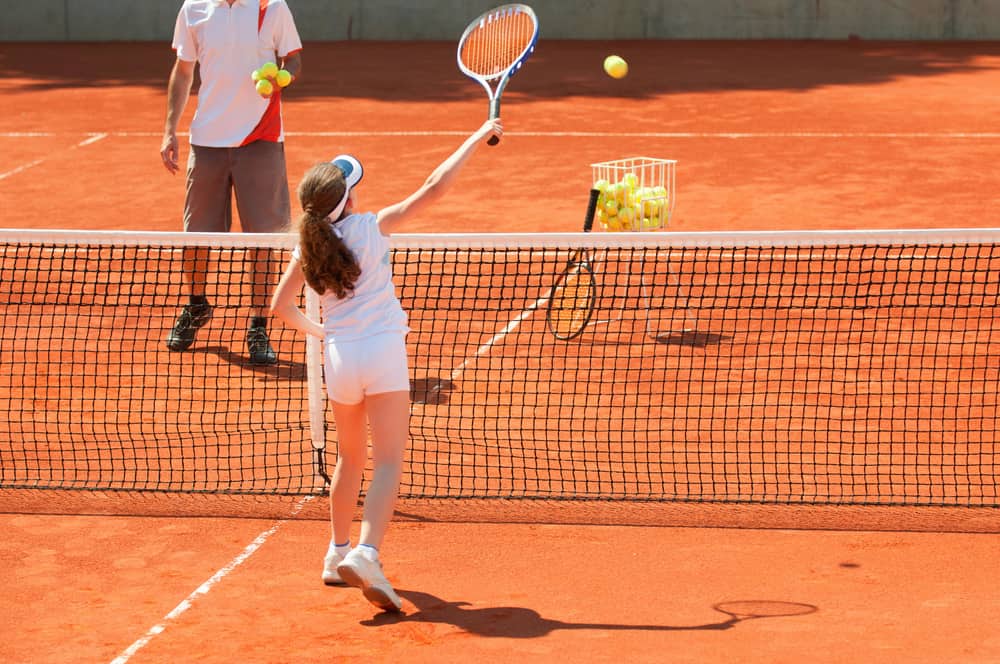
How Common Is The Forehand Smash In Tennis?
Forehand smashes aren’t as typical as forehand and backhand strikes because they cannot be used in every situation. However, a forehand smash is an excellent way to secure more points, especially if your opponent isn’t as fast with their recovery as they should be.
Stronger players use forehand smashes more often since you need some strength to smash the ball faster. Fortunately, you can practice your forehand smash to ensure you are comfortable using it, and by practicing, you will become stronger too.
The forehand smash will also help improve your serve technique and can help you score more points during a tennis match. Ensure you practice your forehand smash often to know where to place the ball for the best results.
Conclusion
Hold your racket with a continental grip for a forehand smash and ensure you are behind the ball. Pull your racket back and drive your hips forward when hitting the ball, pronating your arm to have your racket facing the net. Get in the ready position ASAP after completing the forehand smash.

